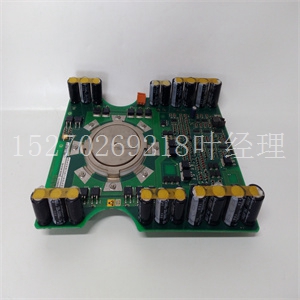HIEE200072R2 USB030AE02处理器卡件
使用冗余IP地址的TCP连接。远程主机在与冗余系统通信时应使用冗余IP地址。当以太网接口在活动和备份状态之间切换时,直接IP地址处的现有Modbus TCP服务器连接不会受到干扰。1.4.7冗余系统中的Modbus TCP客户端操作只有活动单元建立并维护Modbus TCP客户端连接(通道)。备份单元不会启动任何Modbus TCP客户端操作。如果尝试Modbus TCP客户端操作,则COMMREQ错误状态返回到本地逻辑程序。当以太网接口从活动状态变为备份状态时,它会关闭所有Modbus TCP客户端连接及其底层TCP连接。由于断开TCP连接可能需要一些时间,冗余系统应使用冗余IP地址为每个连接保留一个备用Modbus TCP客户端连接。这将防止在与新的活动单元建立新的Modbus TCP客户端连接时出现临时资源问题,而与旧的活动单元的先前连接正在关闭。1.4.8冗余系统中的EGD 1级(生产和消耗)活动单元产生到网络的以太网全局数据交换。备份单元仅生成启用了在备份模式下生成的EGD交换机。当活动以太网接口更改为备份时,它将停止所有EGD交换机的生产。当配置为冗余IP操作时,活动和备份以太网接口也应配置为通过多播主机组或本地子网广播地址使用EGD交换。这允许活动和备份单元从网络接收最新数据。Emerson不建议使用单播操作,因为不建议使用备份单元,因为它不会消耗冗余IP地址上的任何单播交换机。1.4.9冗余系统中的EGD Class 2命令远程主机在与冗余系统通信时应使用冗余IP地址。只有激活单元响应EGD命令。备份单元不响应冗余IP地址。当活动以太网接口更改为备份时,将放弃冗余IP地址上的任何进程中EGD命令。PAC系统™ RX3i和RSTi EP TCP/IP以太网通信用户手册第1节GFK-2224Y 2019年8月简介20当配置为冗余IP操作时,只有活动单元在网络上发送EGD命令。如果备份单元尝试启动任何EGD命令,COMMREQ错误状态将返回到其应用程序。当活动以太网接口更改为备份时,正在处理的任何EGD命令都将结束。不建议向直接IP地址发出EGD命令;活动和备份单元都将响应在直接IP地址处接收的EGD命令。1.4.10冗余系统中的Web服务器操作只有活动单元处理冗余IP地址的Web服务器请求,并响应网页请求。备份单元不响应冗余IP地址。当活动以太网接口更改为备份时,所有Web服务器连接及其底层TCP连接都将中断。Web服务器维护其底层TCP连接的时间仅足以处理:▪ 新网页请求▪ 为每个后续网页显示或更新打开、使用或关闭的新TCP连接。冗余IP地址对Web远程浏览器是透明的,除非在冗余期间请求更改或更新网页
TCP connections that use the Redundant IP address. Remote hosts should use the Redundant IP address when communicating to a redundant system. Existing Modbus TCP Server connections at the direct IP address are not disturbed when the Ethernet interface switches between active and backup states. 1.4.7 Modbus TCP Client Operation in a Redundancy System Only the active unit establishes and maintains Modbus TCP Client connections (channels). The backup unit does not initiate any Modbus TCP Client operations. If Modbus TCP Client operations are attempted, a COMMREQ error status is returned to the local logic program. When the Ethernet interface changes from active to backup state, it takes down all Modbus TCP Client connections and their underlying TCP connections. Because it can take some time to take down a TCP connection, the redundant system should reserve a spare Modbus TCP Client connection for each connection using the Redundant IP address. That will prevent temporary resource problems when establishing new Modbus TCP Client connections to the new active unit while the previous connections to the old active unit are being taken down. 1.4.8 EGD Class 1 (Production & Consumption) in a Redundancy System The active unit produces Ethernet Global Data exchanges to the network. The backup unit produces only the EGD exchanges for which Produce in Backup Mode is enabled. When the active Ethernet interfaces changes to backup, it stops production of all EGD exchanges. When configured for Redundant IP operation, the active and backup Ethernet interfaces should also be configured to consume EGD exchanges via multicast host groups or the local subnet broadcast address. This permits both the active and backup units to receive the latest data from the network. Emerson does not recommend Unicast operation as the backup unit is not recommended as it will not consume any unicast exchanges at the Redundant IP address. 1.4.9 EGD Class 2 Commands in a Redundancy System Remote hosts should use the Redundant IP address when communicating to a redundant system. Only the active unit responds to EGD commands. The backup unit does not respond to the Redundant IP address. When the active Ethernet interface changes to the backup, any in-process EGD commands over the Redundant IP address are abandoned. PACSystems™ RX3i and RSTi-EP TCP/IP Ethernet Communications User Manual Section 1 GFK-2224Y August 2019 Introduction 20 When configured for Redundant IP operation, only the active unit sends EGD commands on the network. If the backup unit tries to initiate any EGD commands, a COMMREQ error status is returned to its application program. When the active Ethernet interfaces changes to backup, any EGD commands in process are ended. Issuing EGD commands to the direct IP address is not recommended; both the active and backup units will respond to EGD commands received at the direct IP address. 1.4.10 Web Server Operation in a Redundancy System Only the active unit processes Web server requests at the Redundant IP address and responds to Web page requests. The backup unit does not respond to the Redundant IP address. When the active Ethernet interface changes to backup, all Web server connections and their underlying TCP connections are disrupted. The Web server maintains its underlying TCP connection only long enough to process: ▪ A new Web page request ▪ A new TCP connection opened, used, or closed for each subsequent Web page display or update. The Redundant IP address is transparent to the Web remote browser unless a Web page change or update is requested during the redundancy












